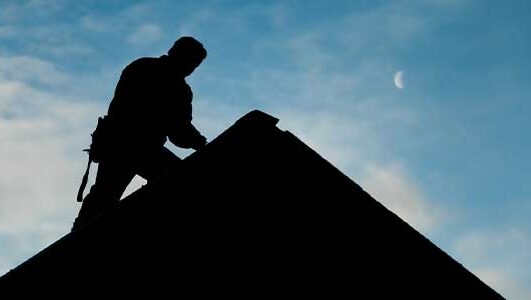
Flat roofs are common in commercial and industrial buildings, providing a practical and cost-effective option for covering large areas. However, flat roofs can present safety challenges for those accessing the roof for maintenance or repair. From falls to electrical hazards, it’s important to consider the potential dangers of working on a flat roof and take steps to mitigate these risks, always contact a professional roofing team to handle your flat roof installation or repair. In this article, we’ll explore the key safety considerations for rooftop access and maintenance on flat roofs.
Before any work is carried out on a flat roof, it’s important to conduct a thorough risk assessment. This should include an evaluation of potential hazards, such as the risk of falls, exposure to electrical equipment, and weather conditions. A plan should be developed to mitigate these risks, taking into account the equipment, tools, and safety measures required to carry out the work safely.
Falls are a common cause of injury and death in the workplace, and working on a flat roof presents an increased risk of falling. To protect workers, a fall protection system should be installed on the roof. This may include guardrails, safety nets, or personal fall arrest systems. The fall protection system should be designed and installed by a qualified professional and should meet relevant safety standards.
Electrical equipment on the roof, such as air conditioning units, can present a significant electrical hazard. Workers should be trained in electrical safety and should always assume that electrical equipment is live unless it has been de-energized and locked out. Electrical equipment should be inspected and maintained regularly to ensure that it is in safe working order.
Weather conditions can also present safety challenges when working on a flat roof. High winds, rain, and snow can increase the risk of falls and other accidents. Work should be scheduled to avoid adverse weather conditions wherever possible, and workers should be provided with appropriate personal protective equipment (PPE) to protect them from the elements.
Regular maintenance and repair are essential to keep a flat roof in good condition and minimize safety risks. Maintenance should be carried out by qualified professionals who have the necessary equipment and training to work safely on the roof. A maintenance schedule should be established, and records kept of all work carried out on the roof.
Conclusion
Working on a flat roof can present a range of safety challenges, from falls to electrical hazards. To mitigate these risks, it’s important to conduct a thorough risk assessment and develop a plan to address potential hazards. Fall protection systems, safe access and egress, electrical safety, weather conditions, and regular maintenance and repair are all key considerations for rooftop access and maintenance on flat roofs.
Reach out to us today at 68-38 Main Street #2 Flushing, NY 11367 (718) 489 4009 https://www.kingsqueensroofing.com for any roofing services.